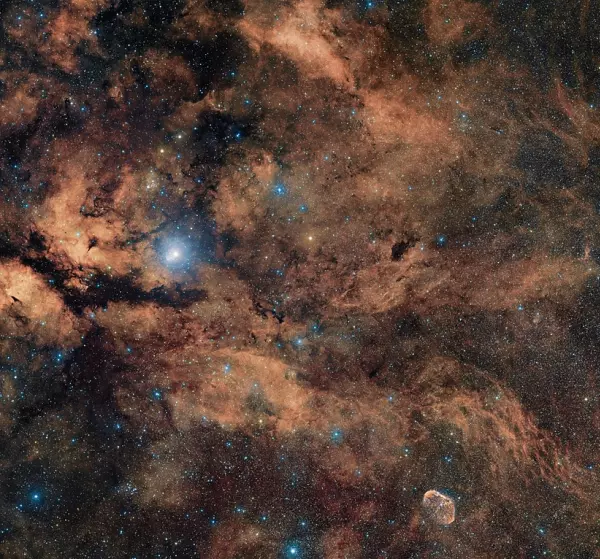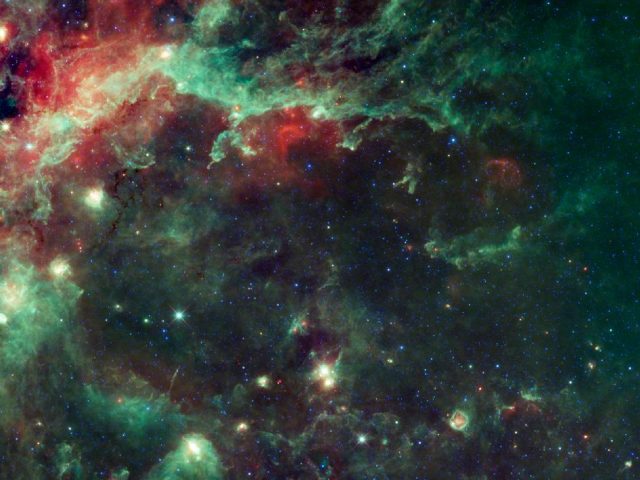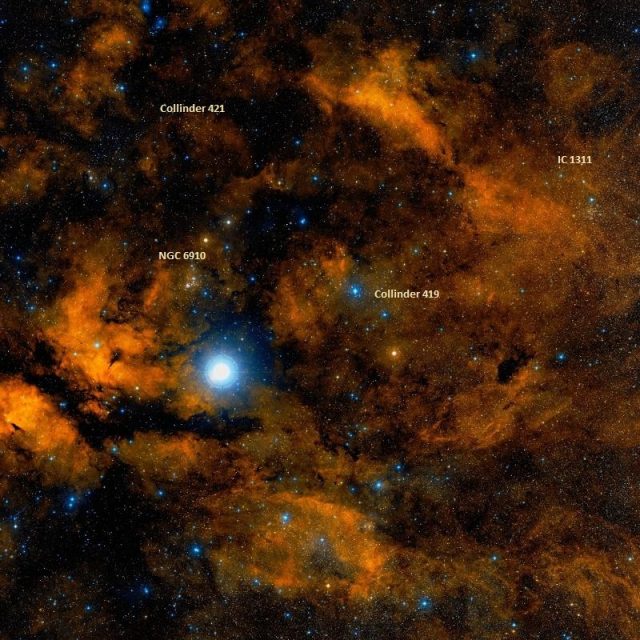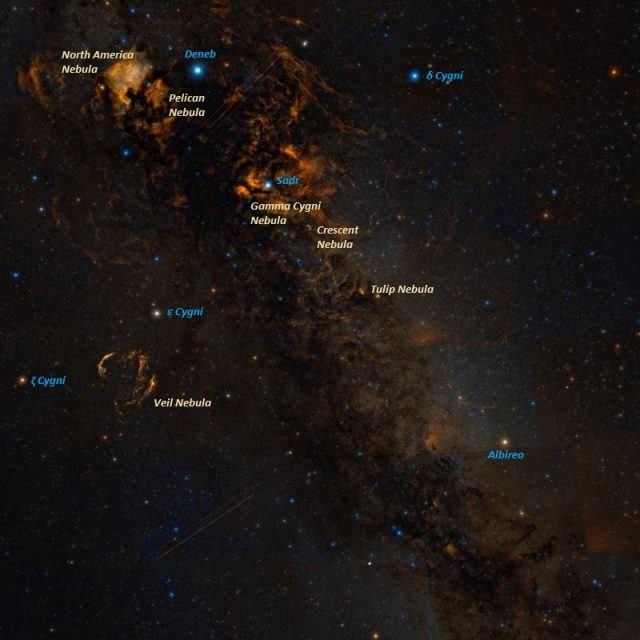The Gamma Cygni Nebula, also known as the Sadr Region or IC 1318, is a diffuse emission nebula that can be seen around Sadr (Gamma Cygni), the star at the center of the Northern Cross, which marks the heart of Cygnus, the Swan. Despite the name, the star and the nebula are unrelated. Even though it looks embedded in the nebulosity, Sadr is approximately 1,800 light years distant, while the nebula is much further away, at 4,900 light years.
The Gamma Cygni Nebula is considered an emission nebula because it is ionized by the radiation of the nearby stars and it emits visible light as a result. The visible portion of the H II region stretches over an area more than 100 light years across. The nebula is illuminated by an O9-class star which is visually obscured by interstellar material.

Gamma Cygni Nebula, image: Flickr Commons/Giuseppe Donatiello
The Sadr Region is very easy to find in the sky. Sadr is one of the bright stars of the Northern Cross and it marks the heart of the celestial Swan. It is a white supergiant star with an apparent magnitude of 2.23. With 12 solar masses and 150 times the Sun’s radius, the star is about 33,000 times more luminous than the Sun.
The Gamma Cygni Nebula has three distinct parts, designated as IC 1318 A, B and C. The dark cloud about 20 light years thick that divides IC 1318 B and C is a dark nebula known as LDN 889. It is physically related to the emission nebula and the surrounding molecular cloud complex. The dark dust lane is responsible for the nebula’s distinctive shape, resembling that of a butterfly, which is why IC 1318 is sometimes also known as the Butterfly Nebula. The components IC 1318 B and C are not separate parts of the nebula, but a single cloud visually separated by LDN 889.
IC 1318 is not to be confused with the Butterfly Nebula (NGC 6302), a bipolar planetary nebula located in the constellation Scorpius, the bright planetary Butterfly Nebula (NGC 2346) in Monoceros constellation, or the planetary nebula known as Minkowski’s Butterfly (M2-9) or the Twin Jet Nebula located in Ophiuchus.
The Sadr Region features a rich complex of dust clouds and glowing nebulosity set against the plane of the Milky Way. It harbours a number of notable deep sky objects.
The young open cluster NGC 6910 occupies 10 arc minutes of the apparent sky and has a visual magnitude of 7.4. It lies half a degree east-northeast of Sadr and may be physically related to the Gamma Cygni Nebula. The cluster contains a number of OB stars, as well as supergiant stars, including the red supergiant RW Cygni. It is the core cluster of the Cygnus OB9 stellar association. It was discovered by William Herschel in October 1786.
Collinder 419 is a young open cluster that surrounds the massive O-class star HD 193322. The cluster has a visual magnitude of 7.60. The nearby open cluster Collinder 421 is fainter, with an apparent magnitude of 10.10.
IC 1311 is another open cluster that can be seen in the region. With an apparent magnitude of 13.10, it is considerably fainter than the others and embedded in nebulosity.
The Gamma Cygni Nebula is located close to a number of other well-known deep sky objects in Cygnus. These include the open cluster Messier 29, the North America Nebula (NGC 7000), Pelican Nebula (IC 5070), Crescent Nebula (NGC 6888), Soap Bubble Nebula (PN G75.5+1.7), Veil Nebula and Tulip Nebula (Sh2-101).
Gamma Cygni Nebula (Sadr Region) – IC 1318
Constellation: Cygnus
Right ascension: 20h 22m 14s
Declination: +40° 15′ 24”
Distance: 4,900 light years
Designations: IC 1318, Gamma Cygni Nebula, Sadr Region, Butterfly Nebula


